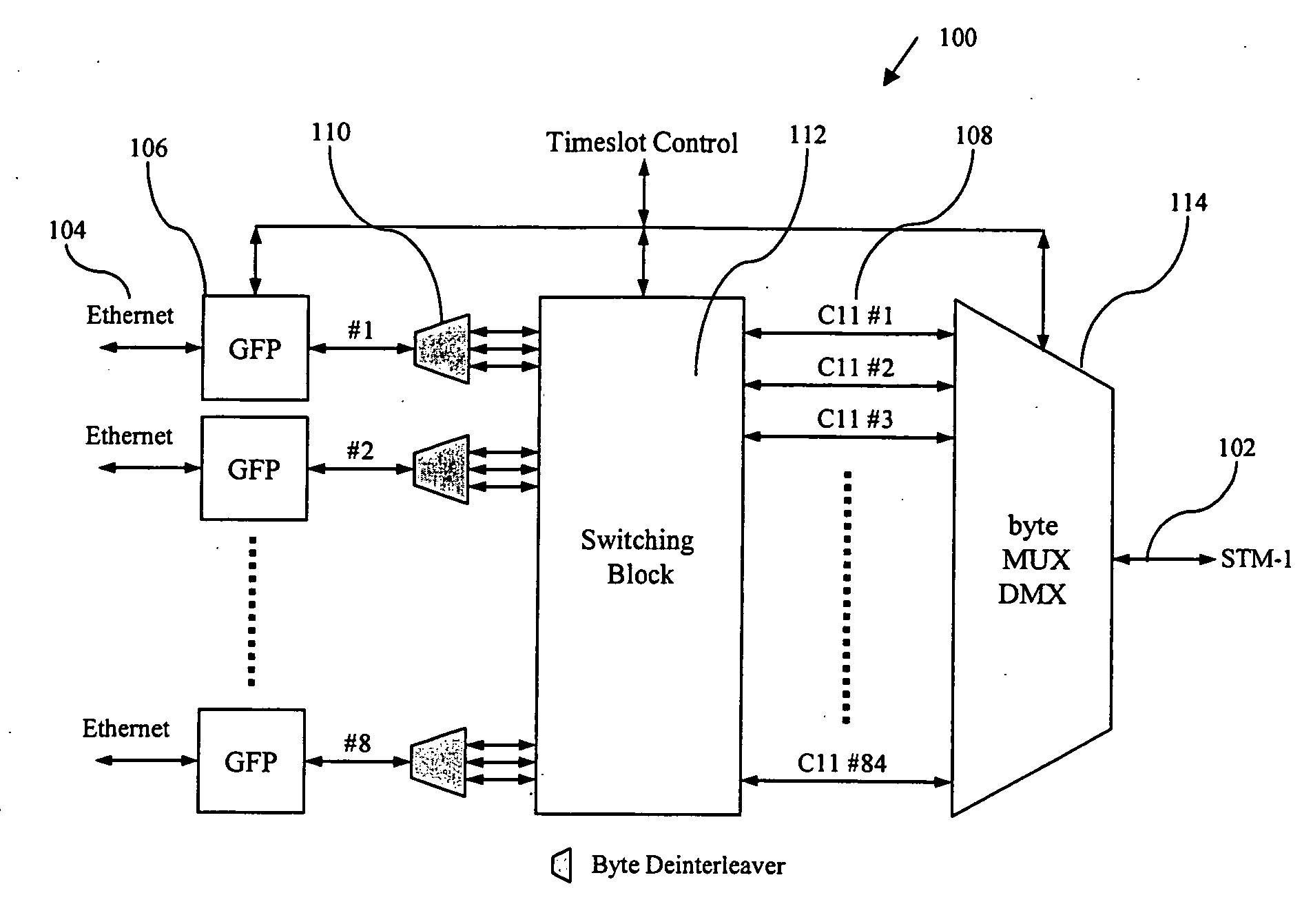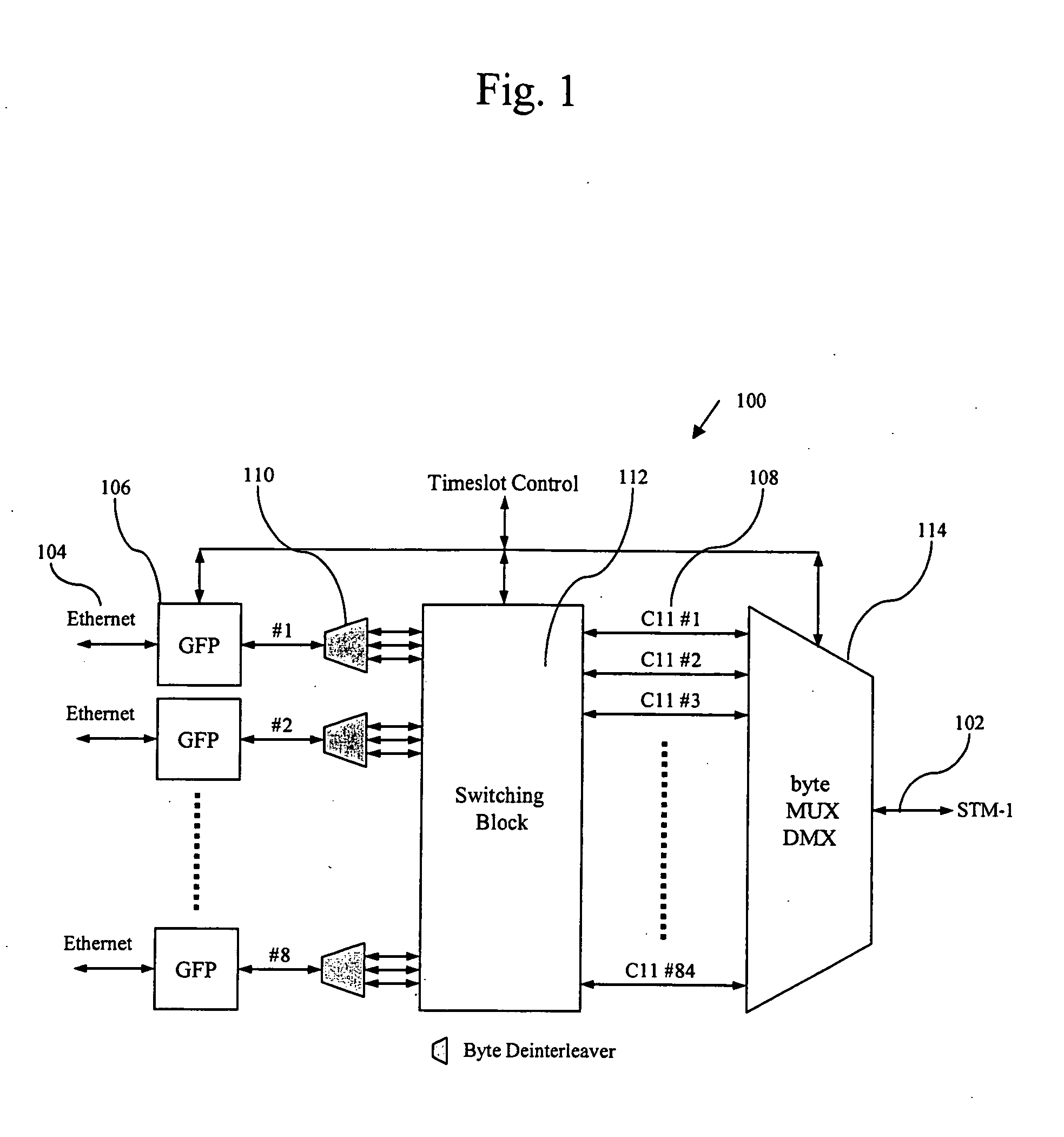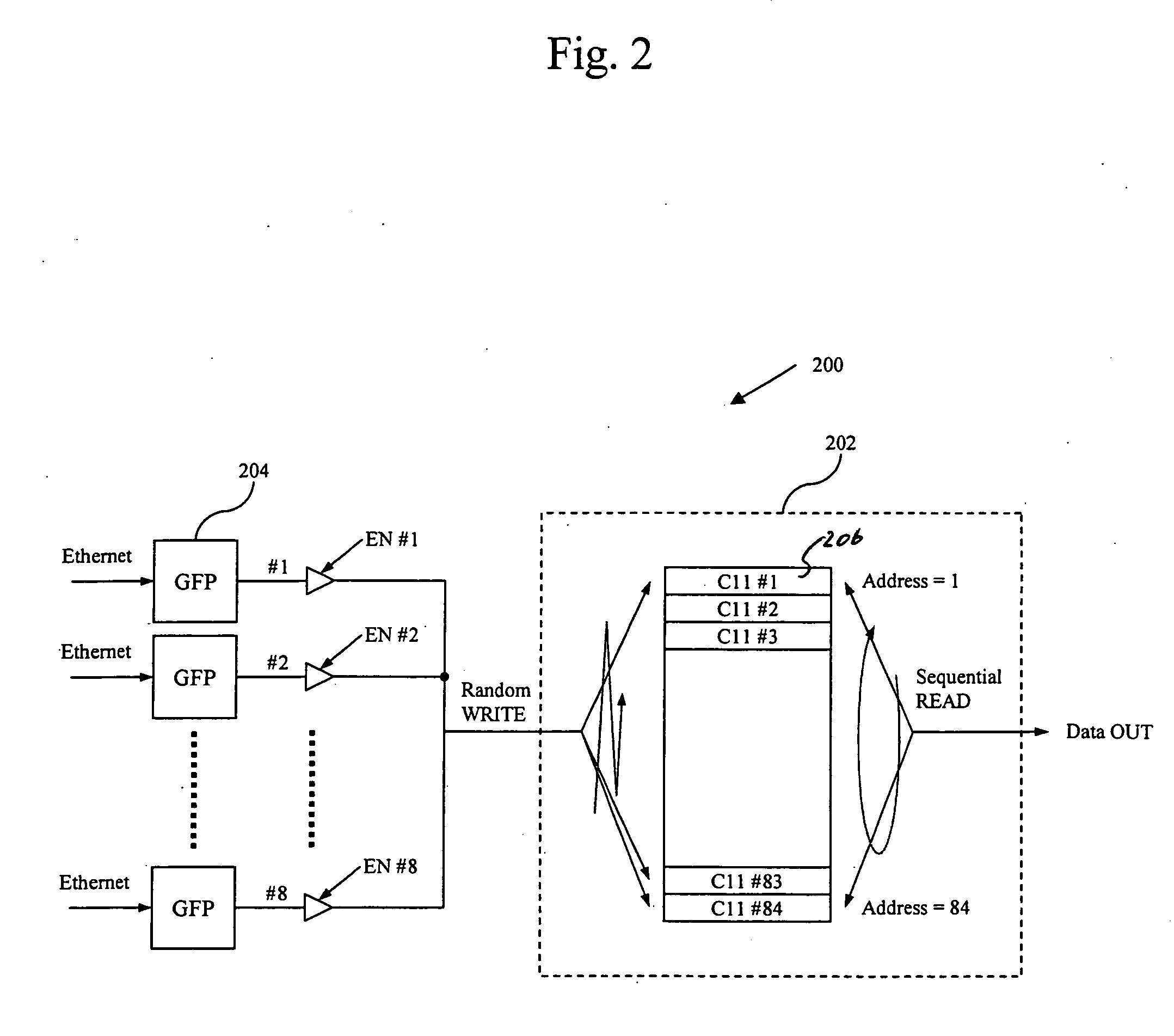Mapping system of virtual concatenation group signals
a mapping system and concatenation group technology, applied in the field of interface systems, can solve the problems of inability to directly transmit data from ethernet through sonet/sdh, the conflict between customers and carriers is not easy to resolve, and the service that the carrier can provide is not the service the enterprise customers need, so as to prevent read/write collision, reduce the size of the circuit, and map effectively
- Summary
- Abstract
- Description
- Claims
- Application Information
AI Technical Summary
Benefits of technology
Problems solved by technology
Method used
Image
Examples
Embodiment Construction
[0025] The interface system in accordance with this invention utilizes a memory 206 and a mapping port controlling the memory 206 to allow data in the form of packet signal to be transmitted over a network adapted to transmit continuous data. The memory 206 may be a dual port memory that is controlled by the mapping port to allow data from Ethernet to transmit over SONET. The interface system utilizes one or more memories to eliminate the need for byte interleaver, de-interlever or complex switching block, and the problems associated with these devices as discussed above. FIG. 2 shows an interfacing system diagram 200 utilizing a VCG mapper 202 configured to match the transmitting signal's bandwidth and effectively map the transmitting signal on to SONET / SDH frame. In this example, the VCG mapper 202 may include a memory 206 to perform the byte-unit signal execution. The memory 206 may have 84 VC-11 time slots where its width is 8-bit memory. As such, the address signal for the memo...
PUM
 Login to View More
Login to View More Abstract
Description
Claims
Application Information
 Login to View More
Login to View More - R&D
- Intellectual Property
- Life Sciences
- Materials
- Tech Scout
- Unparalleled Data Quality
- Higher Quality Content
- 60% Fewer Hallucinations
Browse by: Latest US Patents, China's latest patents, Technical Efficacy Thesaurus, Application Domain, Technology Topic, Popular Technical Reports.
© 2025 PatSnap. All rights reserved.Legal|Privacy policy|Modern Slavery Act Transparency Statement|Sitemap|About US| Contact US: help@patsnap.com



